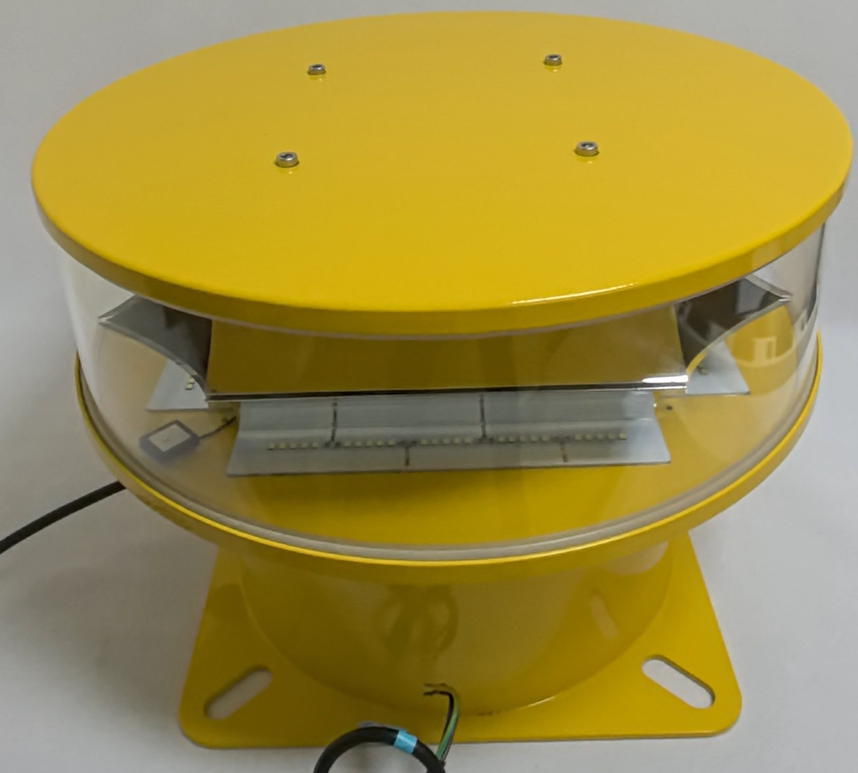Illuminating Safety: The Critical Role of Aircraft Warning Lights
Aircraft warning lights are essential components of aviation and infrastructure safety, designed to prevent collisions between aircraft and tall structures. These high-intensity lights ensure visibility in low-light conditions, reducing the risk of accidents and enhancing navigational awareness for pilots. As urbanization and the construction of skyscrapers increase, the importance of these warning systems cannot be overstated.
This article explores the function, types, regulations, and technological advancements in aircraft warning lights, highlighting their significance in modern aviation safety.
Purpose and Function of Aircraft Warning Lights
The primary purpose of aircraft warning lights is to make tall structures—such as communication towers, wind turbines, bridges, and high-rise buildings—visible to pilots, especially during nighttime or adverse weather conditions. These lights emit bright, flashing signals that help aircraft maintain safe distances and avoid obstacles.
The Federal Aviation Administration (FAA) and the International Civil Aviation Organization (ICAO) mandate the installation of such lights on structures exceeding certain heights. Compliance with these regulations ensures uniformity in warning systems, reducing confusion for pilots navigating diverse airspaces.
Types of Aircraft Warning Lights
Aircraft warning lights come in various forms, each suited for different applications:
1. Red Obstruction Lights
Typically used on structures below 200 feet (61 meters).
Emit steady or flashing red light.
Commonly found on buildings, cranes, and telecommunication towers.
2. Medium-Intensity White Strobe Lights
Used on structures between 200 and 500 feet (61–152 meters).
Produce high-visibility white flashes.
Ideal for urban environments where red lights may blend with city lights.
3. High-Intensity White Strobe Lights
Required for structures exceeding 500 feet (152 meters).

Extremely bright, visible from long distances.
Often used on skyscrapers and large wind turbines.
4. Dual Lighting Systems
Combine red and white lights for enhanced visibility.
Used in areas with varying light conditions.
| aircraft warning light |
Regulatory Standards and Compliance
Strict guidelines govern the installation and operation of aircraft warning lights. Key regulatory bodies include:
FAA (Federal Aviation Administration) – Sets standards for obstruction lighting in the U.S.
ICAO (International Civil Aviation Organization) – Provides global recommendations.
IEC (International Electrotechnical Commission) – Defines technical specifications for lighting systems.
| aircraft warning lights |
Non-compliance can lead to penalties and increased accident risks, making adherence to these standards crucial.
Technological Advancements in Aircraft Warning Lights
Modern aircraft warning lights incorporate advanced technologies to improve efficiency and reliability:
LED Lighting – Energy-efficient, long-lasting, and brighter than traditional incandescent bulbs.
Solar-Powered Systems – Reduce dependency on electrical grids, ideal for remote locations.
Smart Monitoring – IoT-enabled sensors detect faults and automate maintenance alerts.
Adaptive Lighting – Adjusts intensity based on ambient light and weather conditions.
These innovations enhance safety while reducing operational costs and environmental impact.
Challenges and Future Trends
Despite their effectiveness, aircraft warning lights face challenges such as light pollution complaints and maintenance difficulties in extreme weather. Future developments may include:
More discreet lighting designs to minimize urban light pollution.
Enhanced automation for predictive maintenance.
Integration with drone detection systems as unmanned aerial vehicles become more prevalent.
Aircraft warning lights play a vital role in safeguarding air travel, ensuring that tall structures remain visible to pilots at all times. With evolving technologies and stricter regulations, these systems continue to improve, balancing safety, efficiency, and environmental considerations. As infrastructure grows taller and air traffic increases, the reliance on effective warning lighting will only intensify, reinforcing their indispensable role in aviation safety.
